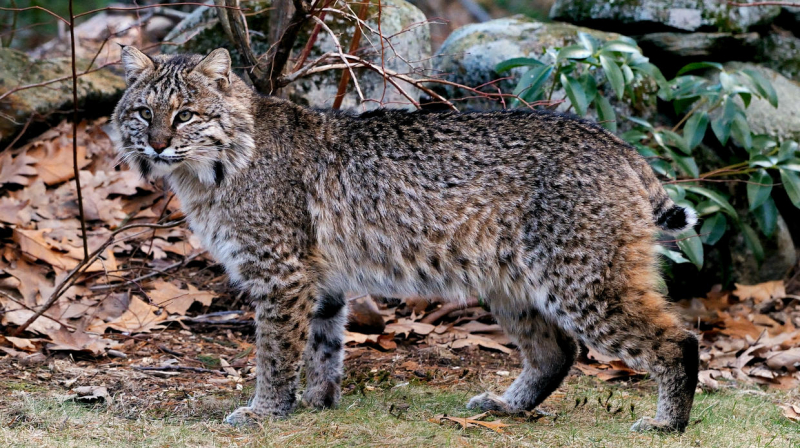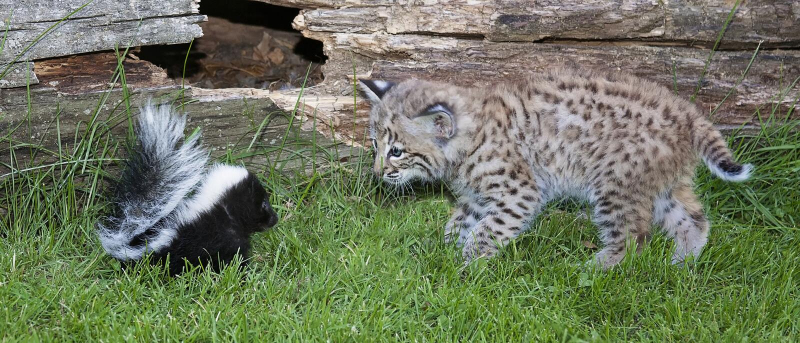Bobcats
Only North America and a few surrounding locations are home to the wild cat known as the bobcat or red lynx. Due to its widespread distribution and substantial population, it has been categorized as Least Concern on the IUCN Red List since 2002. Populations have remained steady despite being heavily hunted for sport and fur, while certain regions have seen a decline. The 49-inch-long bobcat lives in semi-deserts, marshes, bushy regions, and the borders of cities. Its tail is 'bobbed' and has a black tip, thus its name.
Because bobcats and skunks live in environments that are fairly similar, they frequently cross paths, and since bobcats are opportunistic eaters, they do not allow skunks get away. The diverse hunting techniques of bobcats, which vary depending on the prey under focus, make skunks an easy kill for them.
For instance, bobcats may sleep, stand, or remain in a crouch while hunting tiny rodents and creatures like mice and moles, pounce on the prey as soon as it comes within striking distance, and other predators will do the same. On the other hand, bobcats wait for their prey to get closer before attacking and killing it when it is within at least 20 feet of them when it comes to large creatures like small ungulates, domestic cats, and even skunks.










